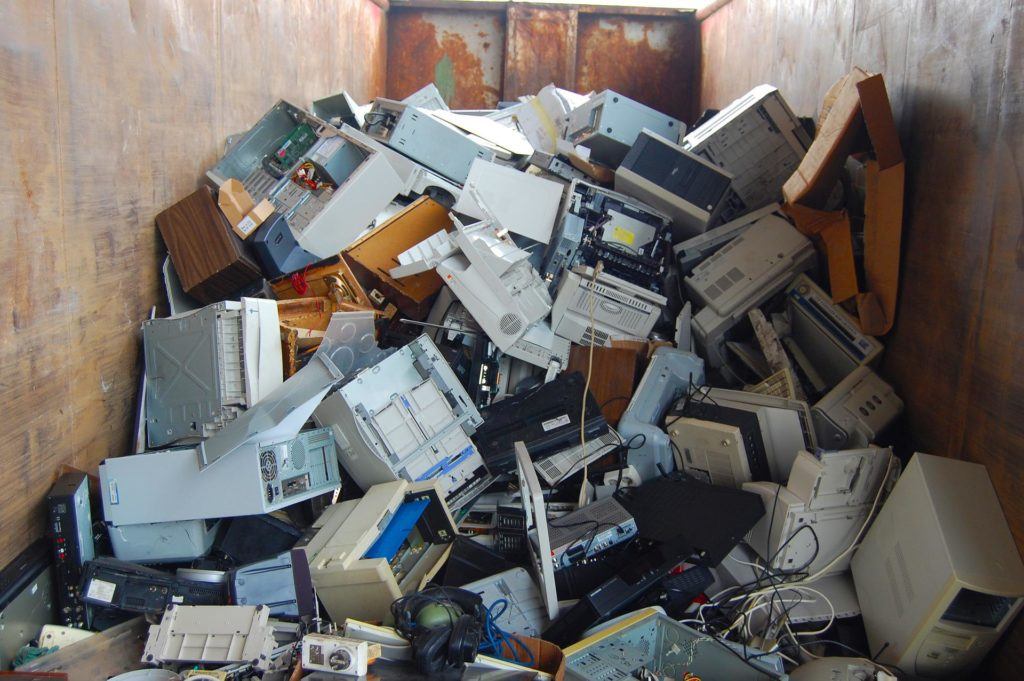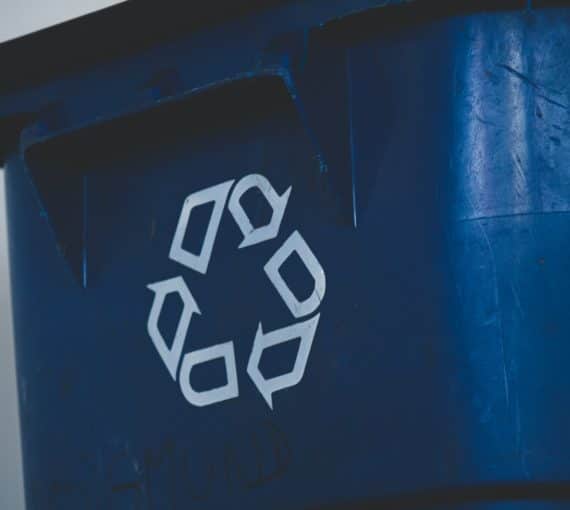
E-waste is a rapidly growing cause of world pollution. (Photo: dokumol via Pixabay)
Hot new gadgets are released and marketed so fast, waste and recycling systems can’t keep up. Plus, improper electronics disposal is increasing, which disproportionally burdens developing nations.
You can play a vital role in the electronics life cycle journey. Start by asking yourself: Do I really need this new tech? Where did it come from? What will happen to it when I’m done with it?
What is e-waste?
“E-waste is defined as anything with a plug, electric cord or battery (including electrical and electronic equipment) from toasters to toothbrushes, smartphones, fridges, laptops and LED televisions that has reached the end of its life, as well as the components that make up these end-of-life products.”
It’s the fastest-growing domestic waste stream, fueled by planned obsolescence, fewer repair options and higher consumption rates of electric and electronic equipment with shorter life cycles.
Recoverable, high-value materials such as gold, silver, copper, platinum and others are being dumped or burned instead of collected for treatment and reuse.
Environmental impact of e-waste
E-waste is a rapidly growing cause of world pollution.
Air
Dismantling, shredding or melting e-waste releases toxic dust particles, causing air pollution. Acids and desoldering chemicals used to break it down release chemical fumes that can extend thousands of kilometres away from recycling sites, creating chronically polluted areas and irreversibly damaging ecosystems.
Soil
Improperly disposed e-waste can contaminate soil with heavy metals, poisoning nearby crops and harming microorganisms and plants.
Water
Once soil has been contaminated, heavy metals (such as barium, lead, lithium and mercury) leak from e-waste into groundwater. They end up in in lakes, ponds, streams and rivers, making them unsafe for animals, plants and communities. They harm access to clean drinking water, kill marine and freshwater organisms and damage ecosystems and biodiversity.
Impact on human health
Long-term implications of improperly disposed electronics are continuously being researched and analyzed. The environmental impacts are devastating and so are the risks to human health.
A 2021 University of British Columbia study showed that improperly disposed e-waste can release environmental toxins linked to cancer, neurological disorders and chronic health issues.
Environmental racism and e-waste
Canada dumps a colossal amount of e-waste in landfills — about 725,000 tonnes each year. Only 20 per cent is properly recycled.
Canada also exports large amounts of e-waste (sometimes illegally!) to developing nations. Companies dodge laws by sending it overseas as “donations,” but the harms are all the same.
Much of these electronics end up in unregulated landfills, polluting the air, soil and water around them and leaving hazardous waste exposed in often vulnerable communities. This is a form of environmental racism.
How to limit your e-waste
According to the UN’s Global E-Waste Monitor, a record 53.6 million metric tonnes of electronic waste was generated worldwide in 2019. Half was personal devices, such as smartphones, tablets, TVs, computers and laptops.
Consider your options for the entire life cycle of your electronic products and make the most responsible choices.
Try these six Rs

Re-evaluate
- Ask yourself some questions. Do you need that new/extra gadget? Can you meet more of your tech needs with fewer electronics, such as one device with multiple functions?
- Get organized. Consider what you already have. For example, before you buy a new memory stick, see if you have one with existing space or data you can clear.

Research
- Learn about materials used in electronics. Some are easy to recycle. Many aren’t. Knowing what’s inside your technology will help you properly recycle and dispose of it.
- Talk to suppliers. If you don’t get much from an internet search on a specific product, write or ask manufacturers and/or retailers about what’s recyclable in what they sell and if they can recommend a recycler near you.
- Look for labels and certification. The range of eco-labels used for electronics include Energy Star and ECOLOGO. Beware of baseless claims, a.k.a. “greenwashing.”
- Look for buyback programs. Many retailers have buyback or trade incentives available at time of purchase.
- Support companies that care about their environmental impact. Vote with your wallet.

Repair and re-use
- Attend a repair café or host your own. Many towns and cities throughout Canada host monthly repair cafés to fix electronics, small appliances and textiles — and much more! It’s a great way to learn new skills, share knowledge and build community.
- Extend the life of the tech you have. Purchase high-quality protective equipment, such as cases and screen covers. Keep your devices clean and dry.

Recycle and rescue
- Find provincial or local recyclers. Look for services in your area. Check the Electronic Products Recycling Association for regulated programs throughout Canada.
- Donate. Many organizations repair used electronics and give them to charities and in-need communities.
- Re-sell. If you have old and/or minimally damaged electronics, sell them to people who will repair and use them. (First consider the item’s practical value. If it’s over five years old, you may not be able to sell it.)
- Check out your workplace options. Many employers have in-house electronic recycling programs. If you’re the decision-maker where you work, start one.
- Talk about it. Not everyone knows about the harmful effects of e-waste. Ask your friends and family how they recycle their end-of-life electronics and offer to help. Establish “green” house rules with the people you live with.



